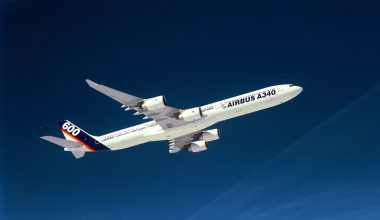Deicing and Anti -icing Awareness
January 24, 2017
–Sunil Kumar
Over a year a number of articles on winter operation have appeared in many aviation magazines. Among them, the issue of 1983 Oct-Dec of BOEING AIRLINER magazine discussed how ice ,frost and snow contamination can seriously reduce climb, maneuvering and performance capabilities of an airplane. This article is dedicated to winter operations and included article on testing of the aerodynamic effects of deicing/anti-icing fluids on a Boeing airplane, performance, deicing/anti-icing ground handling equipment and procedure, related industry activity on deicing/anti-icing and precipitation static.
The Clean Airplane Concept
Federal Aviation Regulation prohibit take off when snow, ice or frost is adhering to wings, propellers, or control surfaces of an airplane. This is referred to as the Clean Airplane Concept. The clean airplane concept is necessary because airplane performance is based on the clean structure. The airplane is designed using the predictable effects of airflow over clean wings. Ice, snow, or frost adhering to the wings disturbs this airflow and results in reduced lift, increase drag, increase install speed and may cause an abnormal pitch characteristic.
It is not just wings contamination that is dangerous. For example, ice in fuselage can break it loose or damage a rear mounted engine. Or, ice buildup on the rear side of engine fan blades during freezing fog condition can cause serious damage as the engine advances for takeoff. There are many other examples but the important thing to remember is that there is no acceptable level of critical surface contamination.
Contamination may come in the form of ice, snow, slush and frost.
Visibly obvious condition that cause this contamination are flaking snow or sleet. Wet snow is particularly dangerous because it sticks to the airplane surface and does not blow off easily. Contamination is also form in the condition that does not look very dangerous such as freezing rain, freezing fog or high humidity. This condition can cause frost or ice that is difficult to see but is as dangerous as wet snow, even in temperature above freezing.
At cruise altitude, the airplane’s surface is very cold. Even after landing, there may be enough cold fuel inside the wing to continue to keep the surface cool. If warmer humid air contacts the cold surface, frost can form on the wing and if it rains on a cold -soaked wing, clear ice can form. Clear ice can also form below a layer of snow or slush. Some airplane has ground thermal anti- system that protects the leading edge but does not stop contamination from forming on the upper and lower wing surfaces. So it is very important to do careful checks for contamination.
Contamination Checks
For the contamination check to be successful, the ground engineers, technical person and crew must be organized, and know who is in charge and have approved procedures in place.The ground checks of the airplane should cover the following critical areas:
- Wing surfaces including leading edges
- Horizontal stabilizer upper and lower surface including leading edges
- Vertical stabilizer and rudder
- Fuselage
- Pilot and temperature probes and angle of attack sensors
- Static ports
- General intakes and outlets
- Control surface cavities
- Engines and all probes
- Landing gears and wheel wells
Eyes and hands are the best tools to use for the contamination check. Be careful not to touch the surfaces with bare hands since the skin may stick to a freezing surface.
Take extra care when conditions cause difficulty to detect contamination such as clear ice. If the only contamination on fuselage as thin layer of hoar frost through which marking can see or layer of frost that is less than one-eighth of an inch thick on the underside of the wings take off may be approved by regularly agency. These are the only exceptions. If there is any doubt the critical surface, then be safe and decide.
De-icing and Anti-icing
When contamination is found in the airplane deicing, anti-icing or both required.
- Deicing removes contamination from the airplane surface. Heated type I (bleed air) fluids are normally used for deicing to help remove contamination.
- Anti-icing prevents the accumulation of ice, snow or frost for certain periods of time. Type II fluids are normally used for anti-icing because they are thickened. They are most effective when applied cold to a clean surface.
Fluids Application
Deicing and anti-icing are either done separately in two steps or together in one step. The procedure used depends on the weather, fluids and equipment available and required hold over time. Heavy contamination or a long hold over time usually required two steps.
After deciding which fluids type to use, the fluid ratio must be selected. Sometime hot water alone is enough to deice or remove contamination from the airplane. The Boeing Maintenance Manual contains fluids ratio guidelines.
For the fluids to be effective, it must be handled properly by everyone involved in the deicing /anti-icing process.
Always deice /anti-ice the airplane as close to the departure time as possible. This is especially important when bad weather condition require shorter hold over times.
Each airplane has a specific configuration for deicing/anti-icing .If there is a heavy accumulation of contamination, remove as much as possible with a rope or squeegee before applying the fluids. This reduces the amount of fluids required to get the surface clean no matter what type of fluids are used.
The following are the examples or areas that must be avoided when applying fluids.
- Directly on window
- Control surface cavities and balance bays
- Probes and angle of attack sensors
- Static ports, air inlets, landing gears ,and wheel wells
- Engines and all probes
All of these areas are also critical surface so they must be clean. Use a broom or a hot air blower to melt the ice and snow from these areas, especially around the landing gears. When deicing/anti-icing is completed, the ground crew should do a final check to make sure the airplane is clean. When they are certain, the airplane is safe for dispatch and the flight crew must be notified. The pilot in command needs to know the type fluid used, the final mixture starts time of the final fluids application.
Pilot Consideration
The Deicing /Anti-icing Code have all of the measurable information the pilot in command needs. But judgment and experience must be used to evaluate the situation from anti-icing to take off. All of the factors that influence the effectiveness of the fluids need to be continuously evaluated.
When taxing keep a safe distance behind other airlines to avoid jet blasts and blowing snow.
- Perform a continuous pre take off check. Be aware of condition of weather which determine how the fluids work at the airlines approved represented areas. These areas may include the random wind shield wipers, and any parts of the fuselage or wings that can be seen from the cockpit. Remember that these areas are only representative. If they are clean, do not assume that the critical surfaces are clean. However, if contamination is building up on the representation areas it is probably building up on the critical surfaces.
- If contamination is building up, or the holdover time expires, do a pre-take off contamination check. This includes checking the critical surfaces as specified in the approved program or with the help of ground crew.
- Be especially careful at night when contamination is more difficult to detect. If contamination is present, never assume it will blow off the wings during the takeoff roll. Do not let schedule pressures influence your decision go back for another fluid application.
- Good coordination between air traffic control and the flight crew may reduce the frequency of these situations. Try to release airlines as soon as possible after completion of the deicing /anti-icing process. Then, minimize the time airplane sits in line for takeoff.
Summary
Winter operation require a thorough knowledge of the current and departure time weather, airport configuration and taxi distance ,and airplane performance.
Cooperation and communication are critical. Although it is ultimately the decision of the pilot in command to take off or ask for another application of deicing /anti-icing, a safe operation is a team effort. Every member of the team must work together to make it clean and keep it clean.
Sunil Kumar is an Avionics Engineer in Nepal Airlines.








